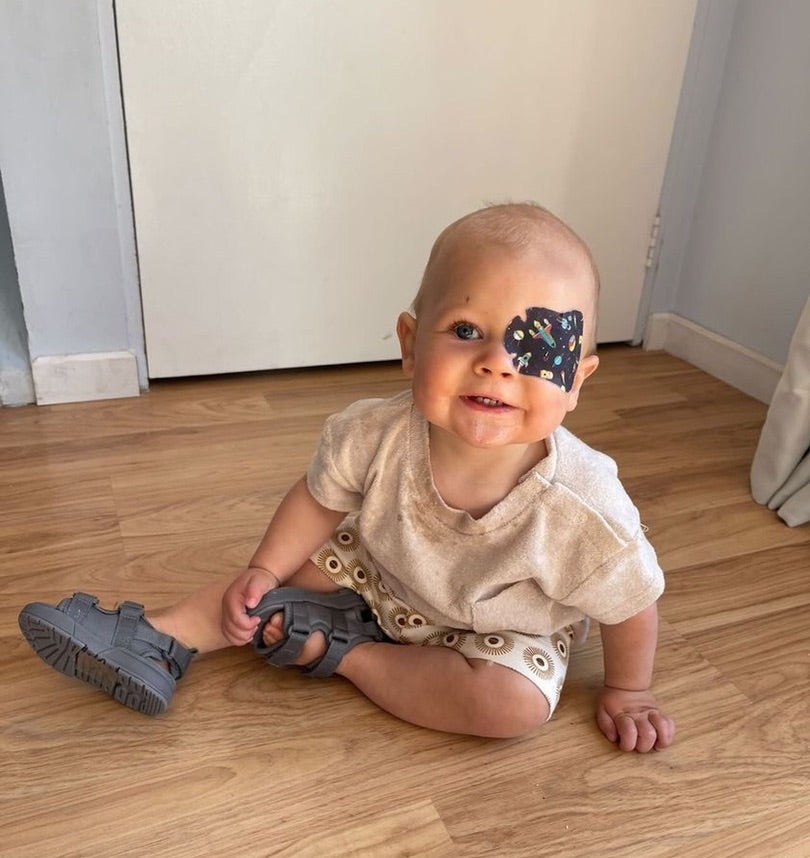Congenital Cataracts Explained
June is Cataracts Awareness Month, and while you probably associate the condition with the elderly, we're here to tell you that cataracts affect kids too! Scroll down to learn about what causes congenital cataracts, how to tell if your child has it and the treatment options available.
What are Congenital Cataracts?
Congenital cataracts are a cloudiness or opacity in the lens of the eye that develops while your child is still in the womb. They can occur in one or both of the eyes and vary in size and effect on the child's vision. Studies have estimated that roughly 3 in 10,000 children are born with cataracts, like this Speckles superstar, Jack.
What are the signs of Congenital Cataracts?
The most common sign of a congenital cataract is a cloudiness or 'milky' film over the lens of the eye. Other signs can include a halo or white spot on the pupil of the eye when a bright light is shone into it, progressive vision loss or a noticeable weakening of one eye, as seen in cases of Strabismus. It is important to note that young children and babies may not notice changes in their vision, as to them, this is normal. If you have a family history of the condition or notice the opacity of your child's eyes changing, it is important to seek consultation from an eye care professional.

What causes Congenital Cataracts?
Congenital cataracts can be a result of genetic abnormalities, structural problems in the eye, infections, injury, or they can occur spontaneously without an obvious cause. Most cases of congenital cataracts are associated with hereditary conditions, so if you have a history of cataracts and eye disease in your family, it is important to monitor your child's eyes and schedule regular consultations with an eye care professional. You can learn more about the signs that your child needs an eye test here.
How do Congenital Cataracts affect my child's vision?
When light enters the eye, it is focused onto the retina, which transmits signals to the brain to process into images. Congenital cataracts prevent light from entering the eye through a clear path, therefore impacting your child's ability to see the world around them.
When cataracts occur in adults, their eyes are already developed, so any vision loss can be halted or potentially reversed. In cases of congenital cataracts, the child's eyes are still developing, so if the cataract only occurs in one eye, it can result in your child's stronger eye overcompensating to create a clear image. This can have a huge impact on your child's vision development, leading to other issues such as Amblyopia, retinal detachment, Strabismus or Glaucoma.
What are the treatment options?
Treatment for this condition is dependent on the size and location of the cataract. In minor cases, eye specialists may recommend a wait-and-see approach, scheduling regular check-ups to monitor the condition. If the cataract does not resolve itself naturally, a lensectomy may be performed. In this minor surgery, a small incision is made in the lens so that the cataract can be suctioned out through the lens capsule.
Ophthalmologists will recommend refractive correction therapy after a lensectomy, which assists the eye in focusing light onto the retina, preventing astigmatism, nearsightedness or farsightedness from developing. The most common approach for refractive therapy is the use of hard (RGP) or soft contact lenses, which will need to be changed either weekly or daily, depending on your child's prescription. As part of your child's long-term treatment, your specialist will adjust the strength and fit of the contact lenses as your child grows and their eyes develop. Another option for refractive therapy is wearing glasses, however, the appropriateness of this strategy depends on the age of your child.
If the congenital cataract has caused an imbalance in the strength of your child's eyes, your specialist may also recommend occlusion therapy (patching the stronger eye). You can learn more about occlusion therapy and why we patch the eye here.
Where can I learn more and access support?
Cataracts Kids Australia is a 'charity designed to improve support for children with cataracts and their families, to enhance clinical care and to build connections with research across Australia'.
You can visit their website to learn more about the community and health resources available to you and your family.


